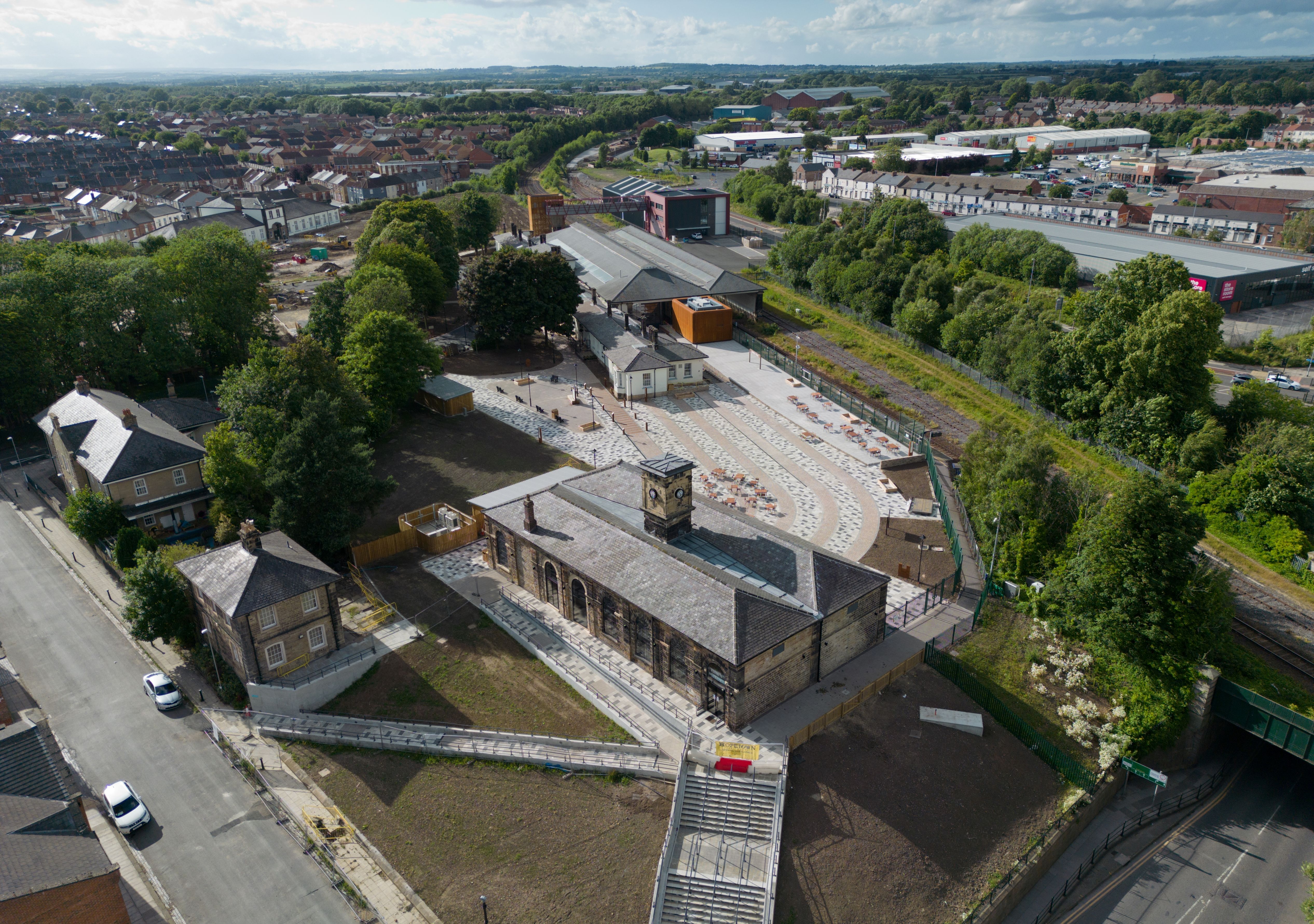
High-Tech & Heritage
Through a perfect blend of high-tech and heritage elements, Hopetown tells the story of the Stockton and Darlington Railway - the world’s first steam locomotive passenger railway, and its pivotal role in the development of rail travel around the globe. Peppered with interactive features throughout, thanks to SPACE Architects working closely with clever and imaginative exhibition interpretation specialists, PLB, sights, sounds, and smells collide at every juncture, to transport us back to the 1800s. It’s striking that the oldest of the buildings housing these historic delights, have been standing since the first half of the nineteenth century. Mike proudly explains that Hopetown has the world’s most important group of surviving early railway buildings.
David Coundon, Director of SPACE Architects, who’s led the project design from concept to completion, explains how the vision was to renew these buildings as focal points of the visitor complex, showcasing them as museum pieces in their own right, whilst also creatively repurposing them to house Hopetown’s unique collection of artefacts and new interactive attractions.
For those arriving at Hopetown by car, their experience begins around 100 metres east, where, under the gaze of Skerne Bridge - the world’s oldest railway bridge in continuous use, a new car park has been created. A new rectangular, Corten steel art structure cleverly positioned at the foot of the car park, perfectly frames the view of the Scheduled Ancient Monument.
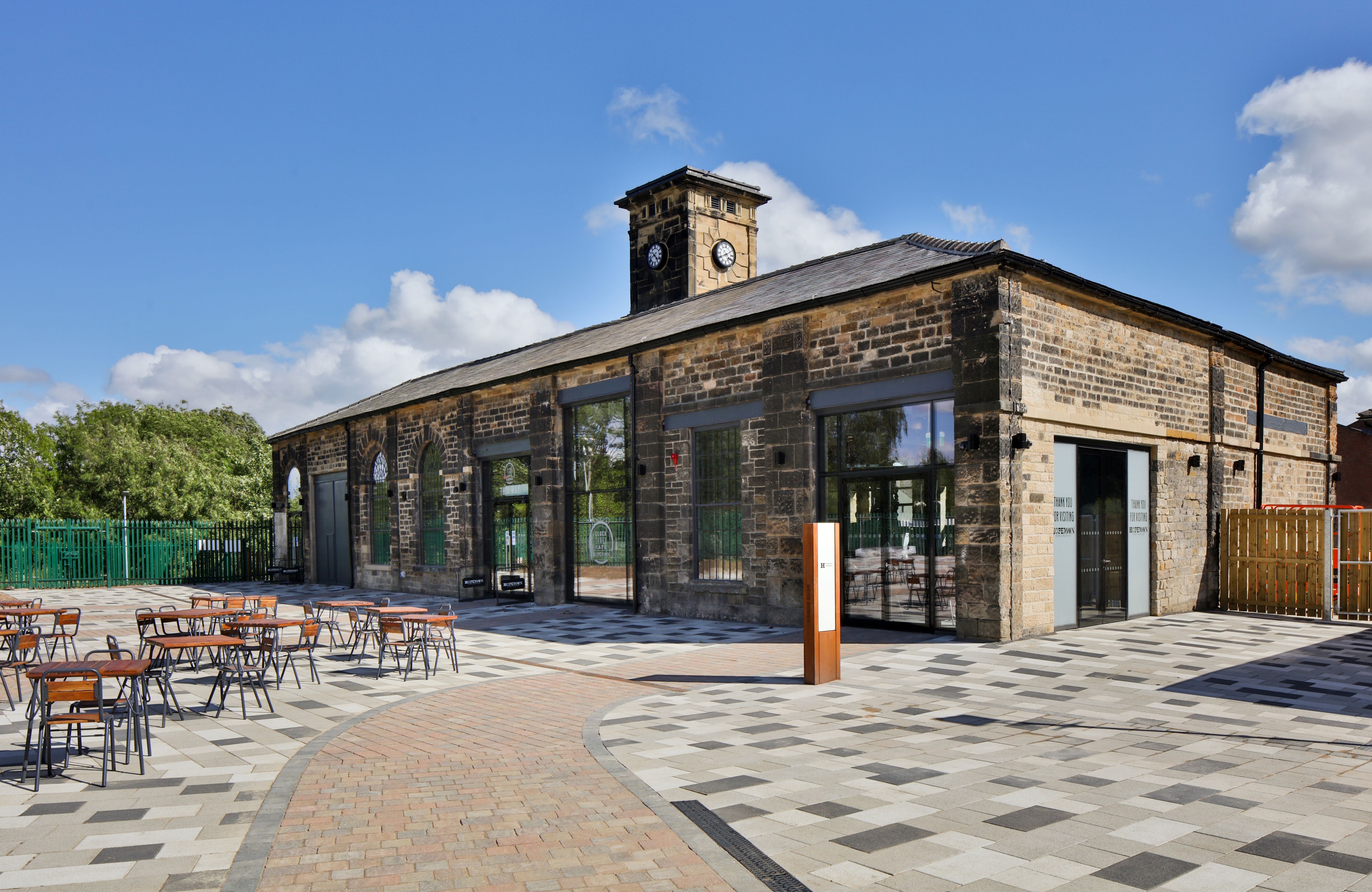
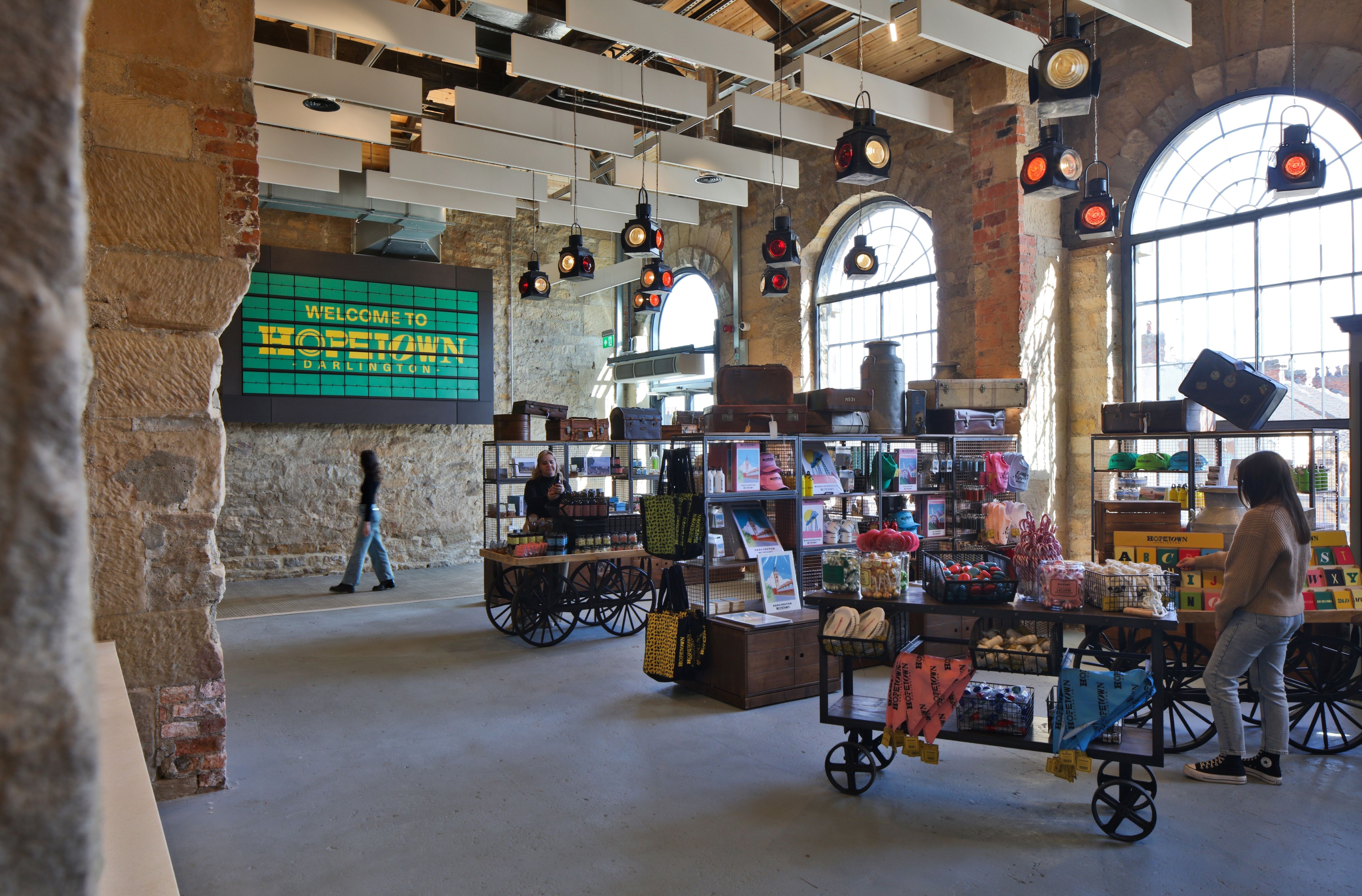
A Platform for Performing Arts
Outside of the Goods Shed, the Goods Yard provides a generous outdoor multi-functional space where special events can be hosted. The platform provides a stage for visiting musicians and plays, and the level ground is perfect for pop-up markets and street theatre performances. Mike points out the deliberate pattern in the blockwork across the ground which SPACE designed to mimic the curved lines of the rail tracks that lay there in the past.
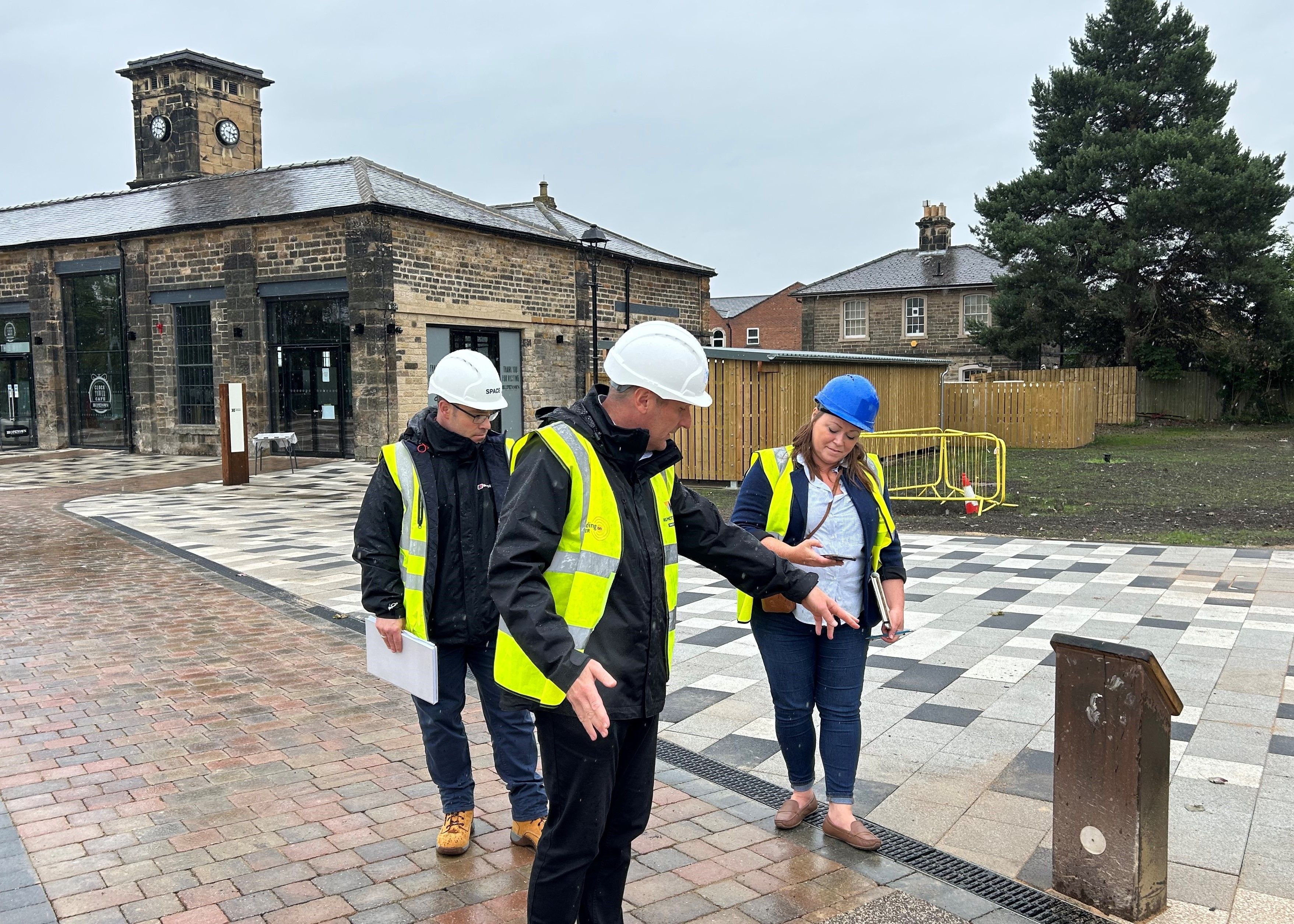
As we make our way to the next building, we walk through a ‘soundscape’. The eye-catching walkway, styled like a railway track, is engraved with chronological rail-related facts, and bolstered by vertical speakers, which cleverly launch into an audio commentary as you pass each step.
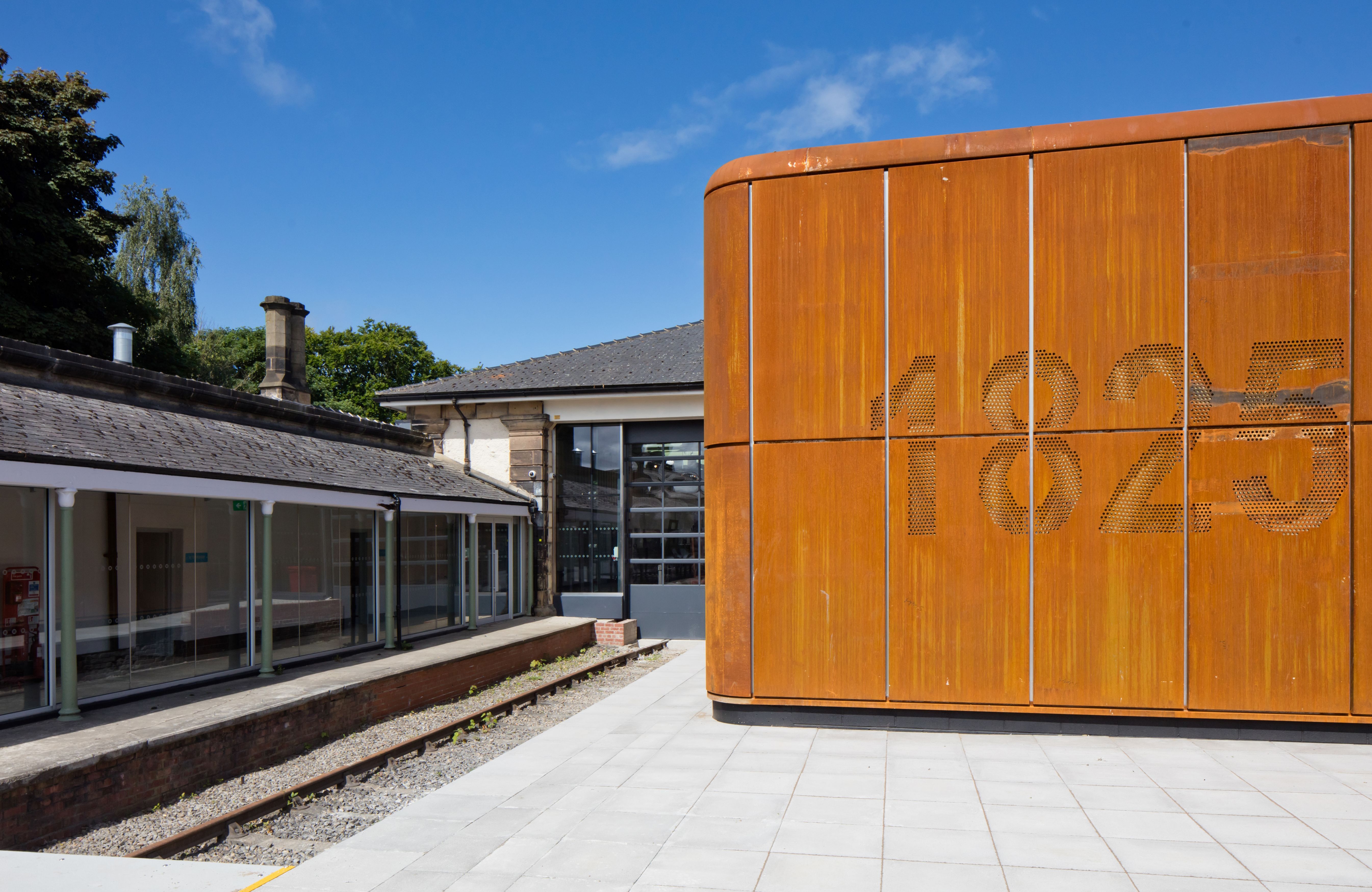
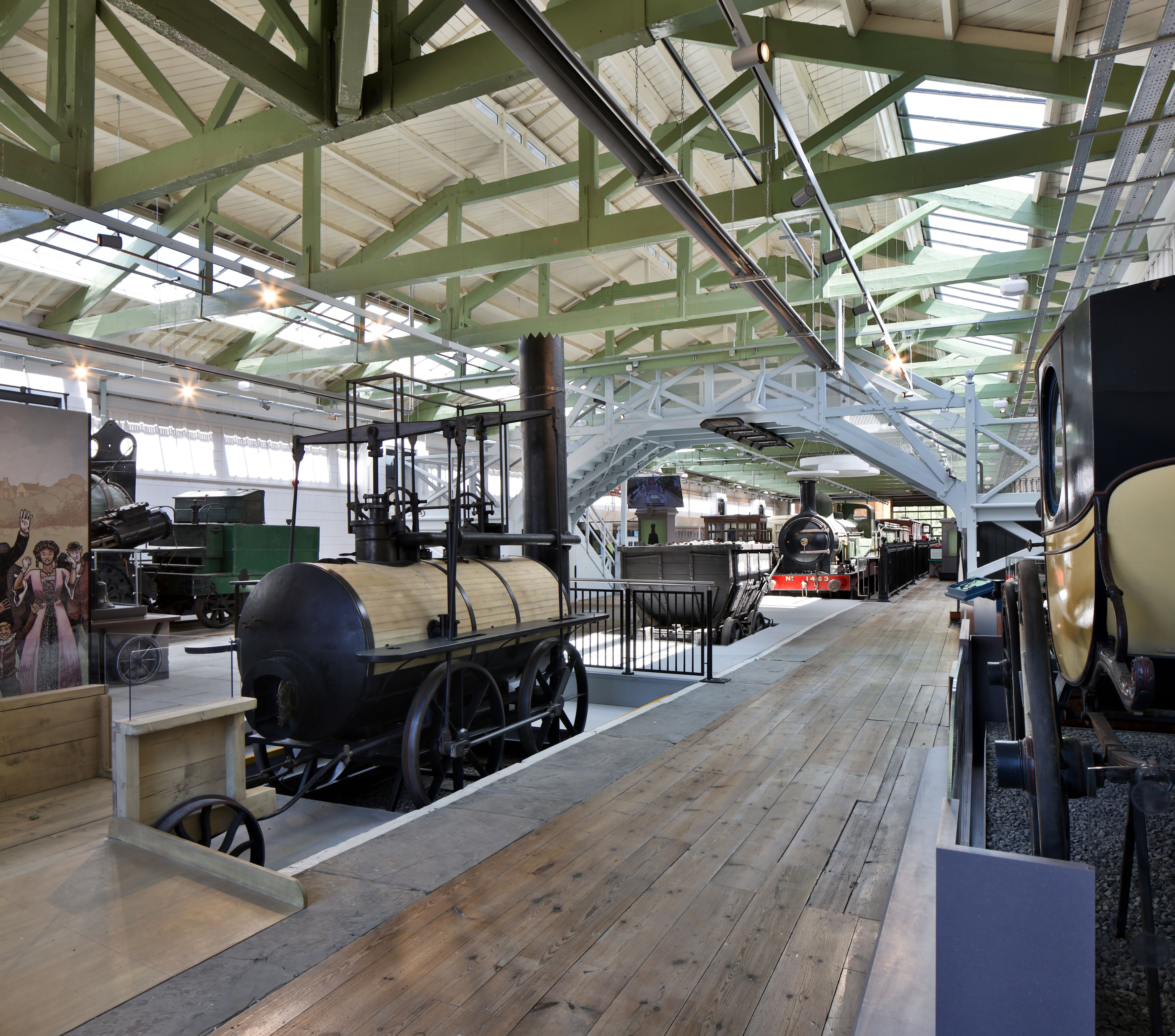
The Station Remastered
Next, we explore what’s probably the best known of all the Hopetown properties – the former station building which sits at the centre of the site. The building, which operated until 2022 as the dedicated railway heritage centre, Head of Steam, has also been subject to a programme of significant remodel , repair and refurbishment and has now been renamed as the North Road Station Museum.
David explained, when the design team first appraised this building, they quickly identified the opportunity to remove the internal walls, which had been constructed to display historic photos, information and data, and return the interior to its original form. Similarly, large, more recent external walls at each end of the platform were removed and replaced with lightweight glazing, to visibly reconnect the external and internal rail tracks used to display locomotives. Now, it’s instantly recognisable as a railway station once more. Standing inside, you feel like a passenger on the platform, and through the magic of modern technology, you can also take a selfie alongside a Victorian train driver and watch yourself move on screen, as though you were really there in the 1800s.
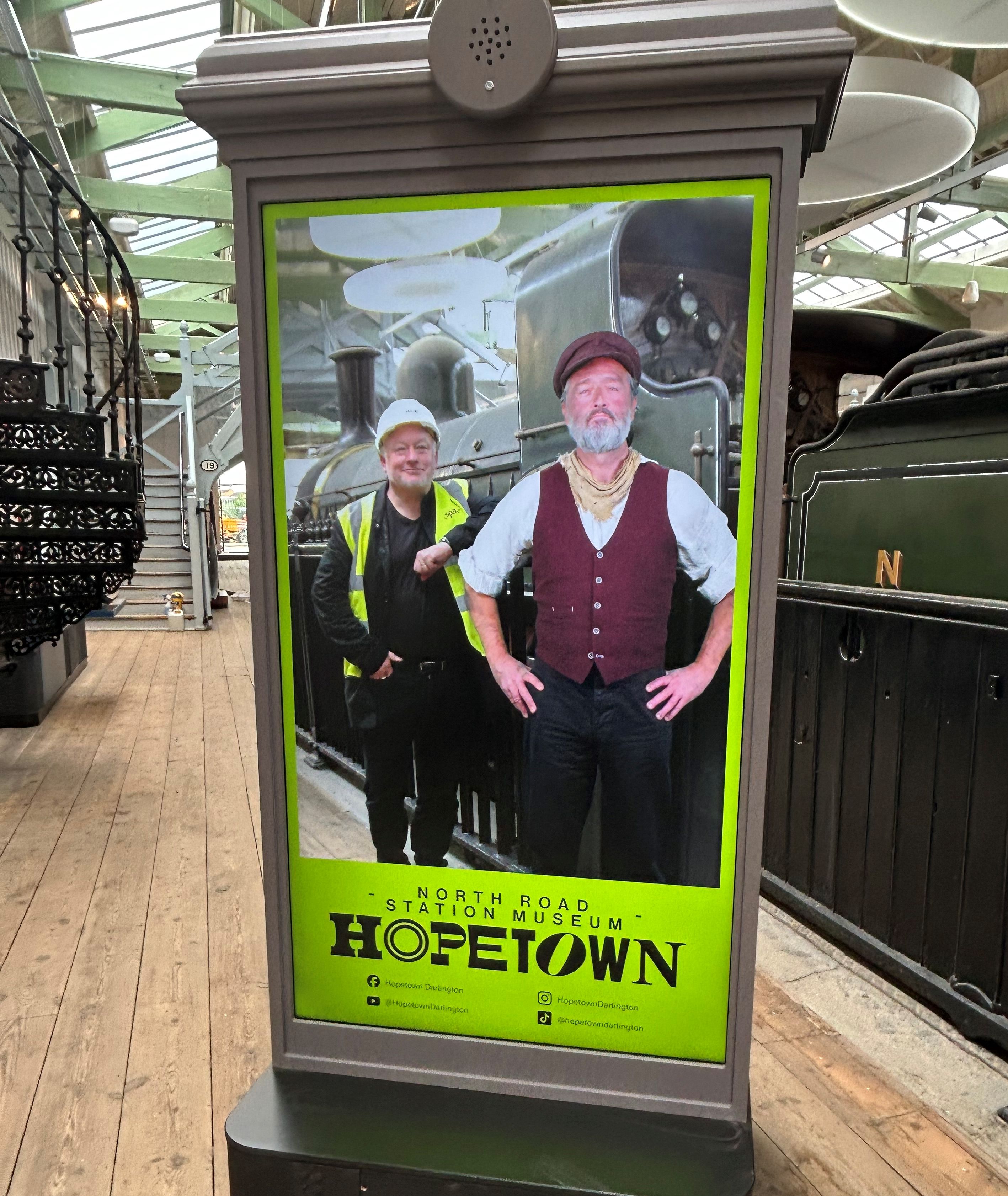
Undoubtedly, one of the most successful design choices in this building – and arguably one of the simplest, was removal of metal sheeting that had been installed across the original station windows. With new windows in place, as well as allowing in more natural light, Hopetown visitors are granted a view onto the live, operational North Road Station platform, and from the other side, present day train passengers are teased with a window into the past.
Just as we step back outside to explore the public realm, landscaping and external art installations, including the marvellous interpretation of a turntable, created by artist Andrew McKeown working with SPACE Architects and with the support of local school children, a bang-up-to-date Azuma train rushes by, visibly driving home Hopetown’s link between the old and new worlds.
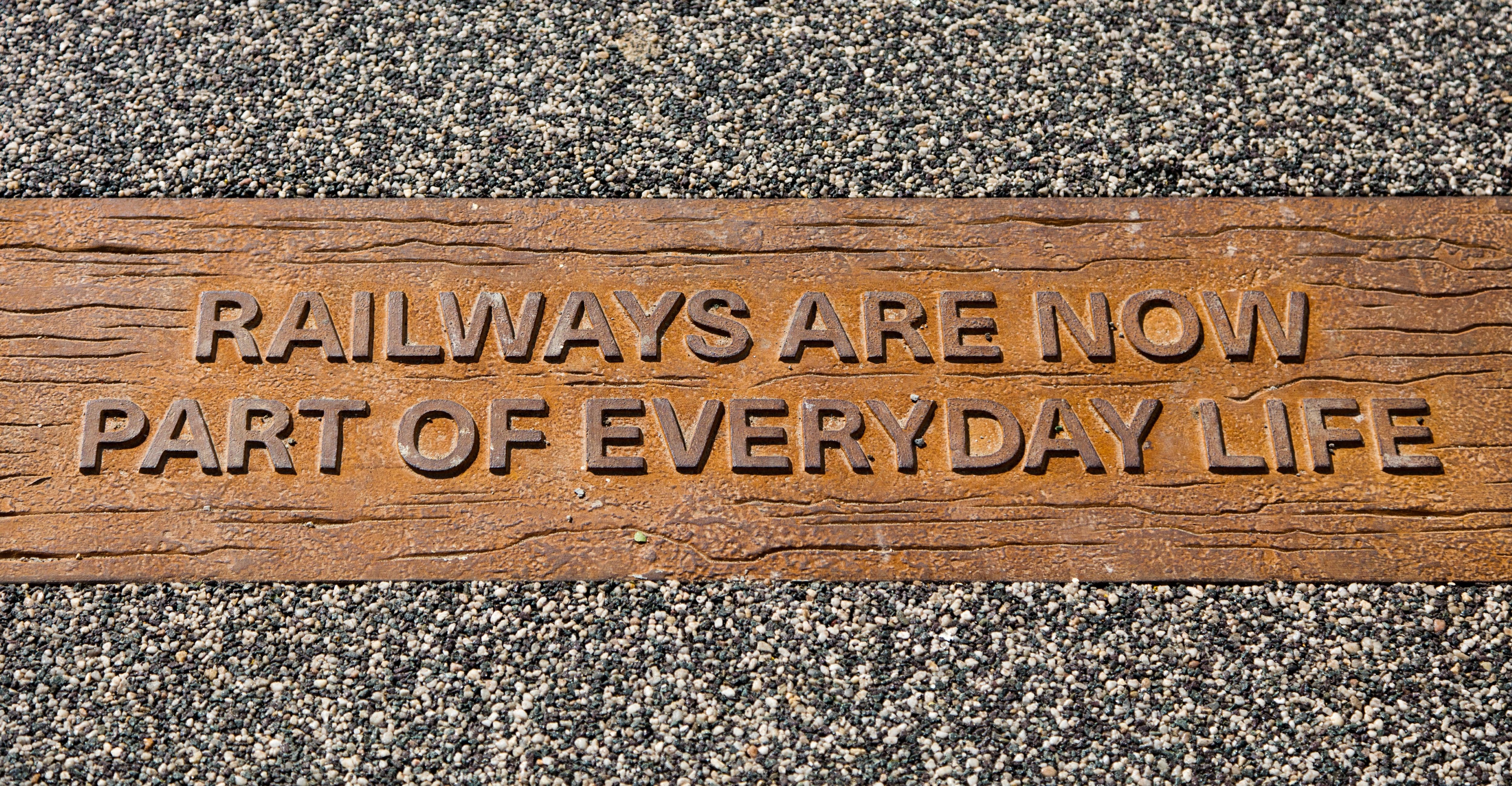
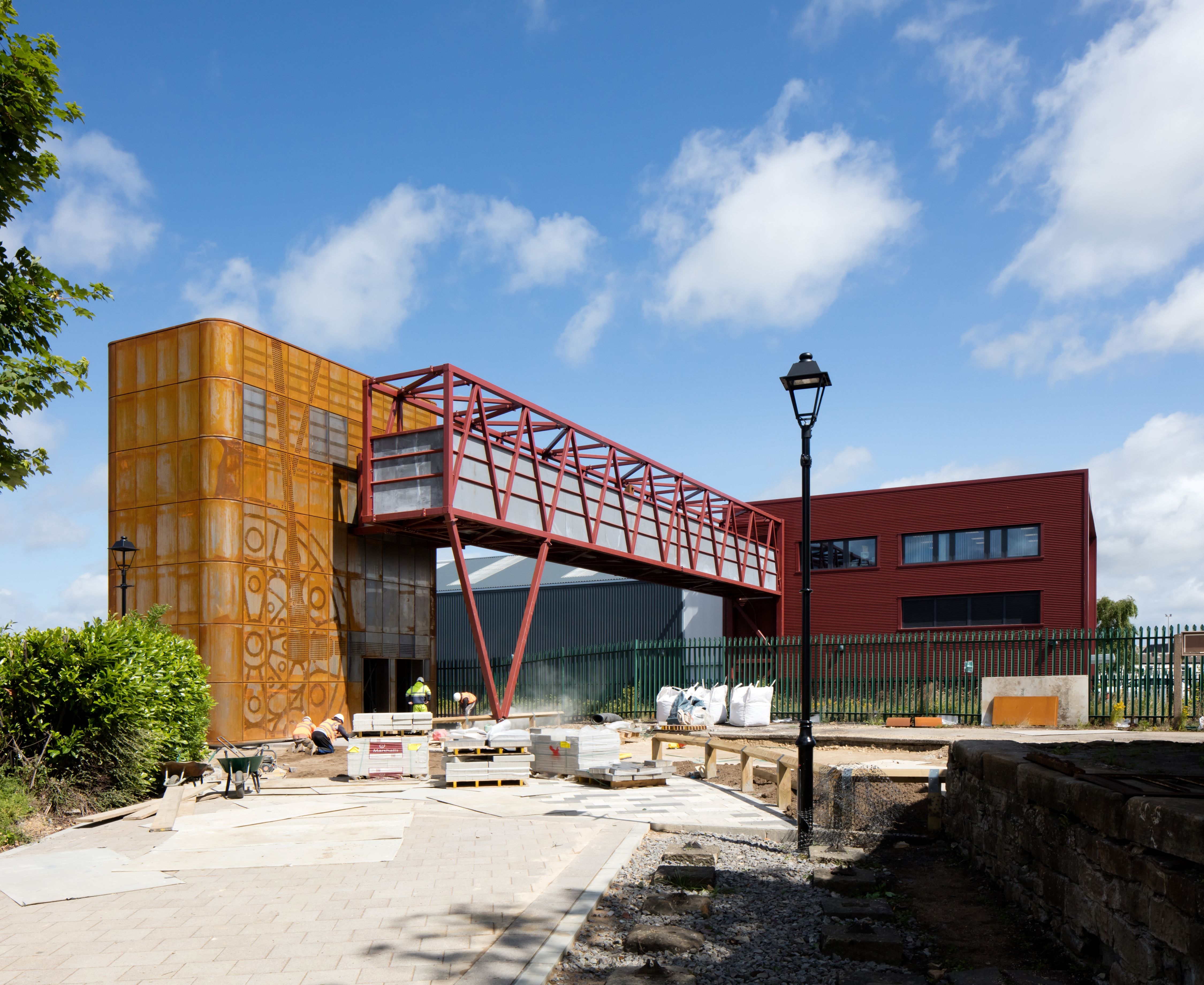
Brand New Features
While the existing heritage buildings and displays within them, have been lovingly designed to work in harmony and create moments of pure magic for visitors, the scheme is also complemented by brand-new, purpose-built elements too, including hard and soft landscaping and thought-provoking public art.
The newly built Darlington Locomotive Works is accessed via a brand new link bridge that features augmented reality periscopes en-route, enabling views along the tracks as they would have appeared in 1825. From viewing platforms in this new building, visitors can watch locomotives being intricately, and lovingly built by volunteers and rail enthusiasts.
Wagon Woods - a newly constructed rail-themed adventure play park, designed by play specialists CAP.CO, brings added appeal for mixed-age children and families.
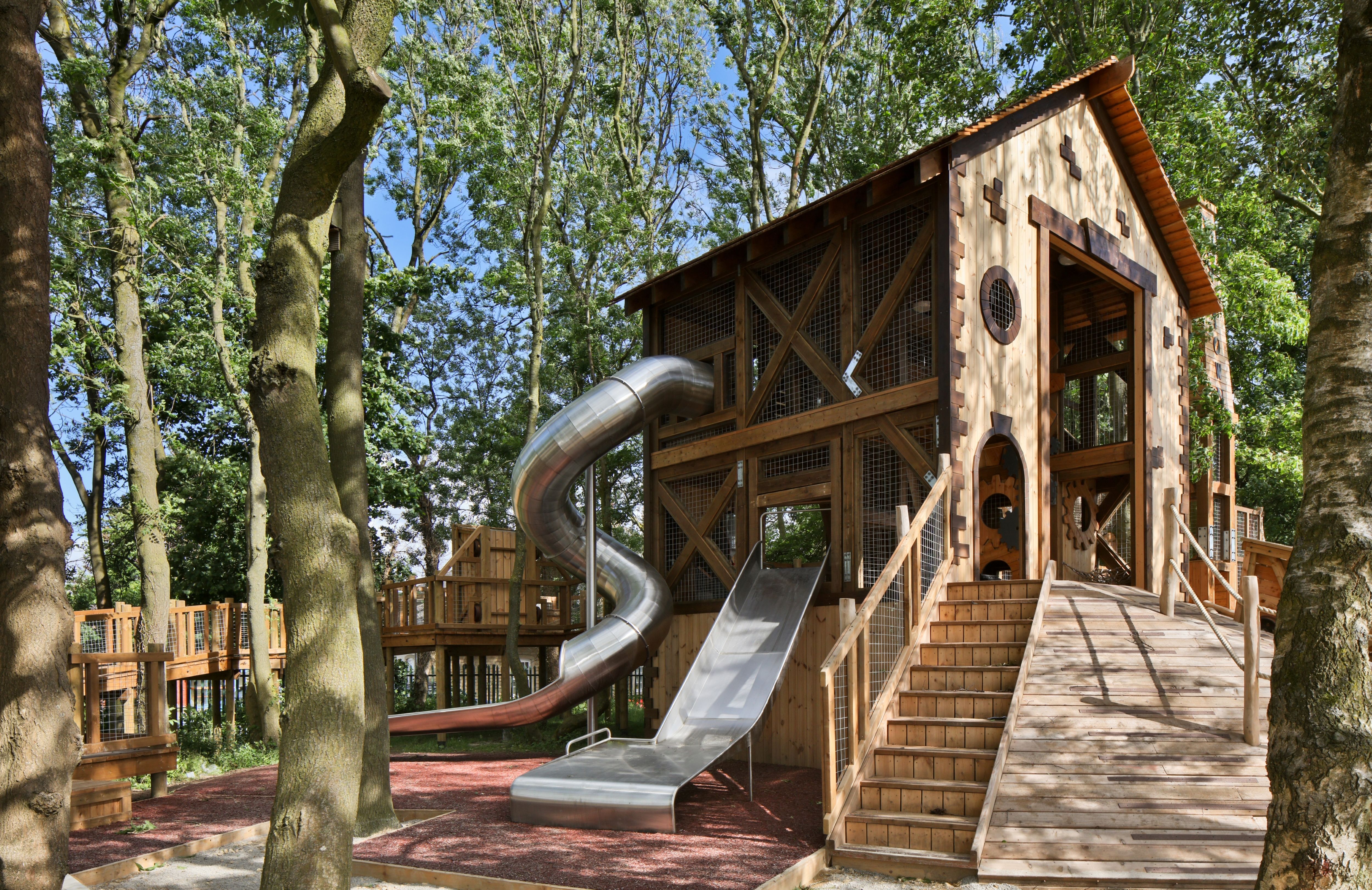
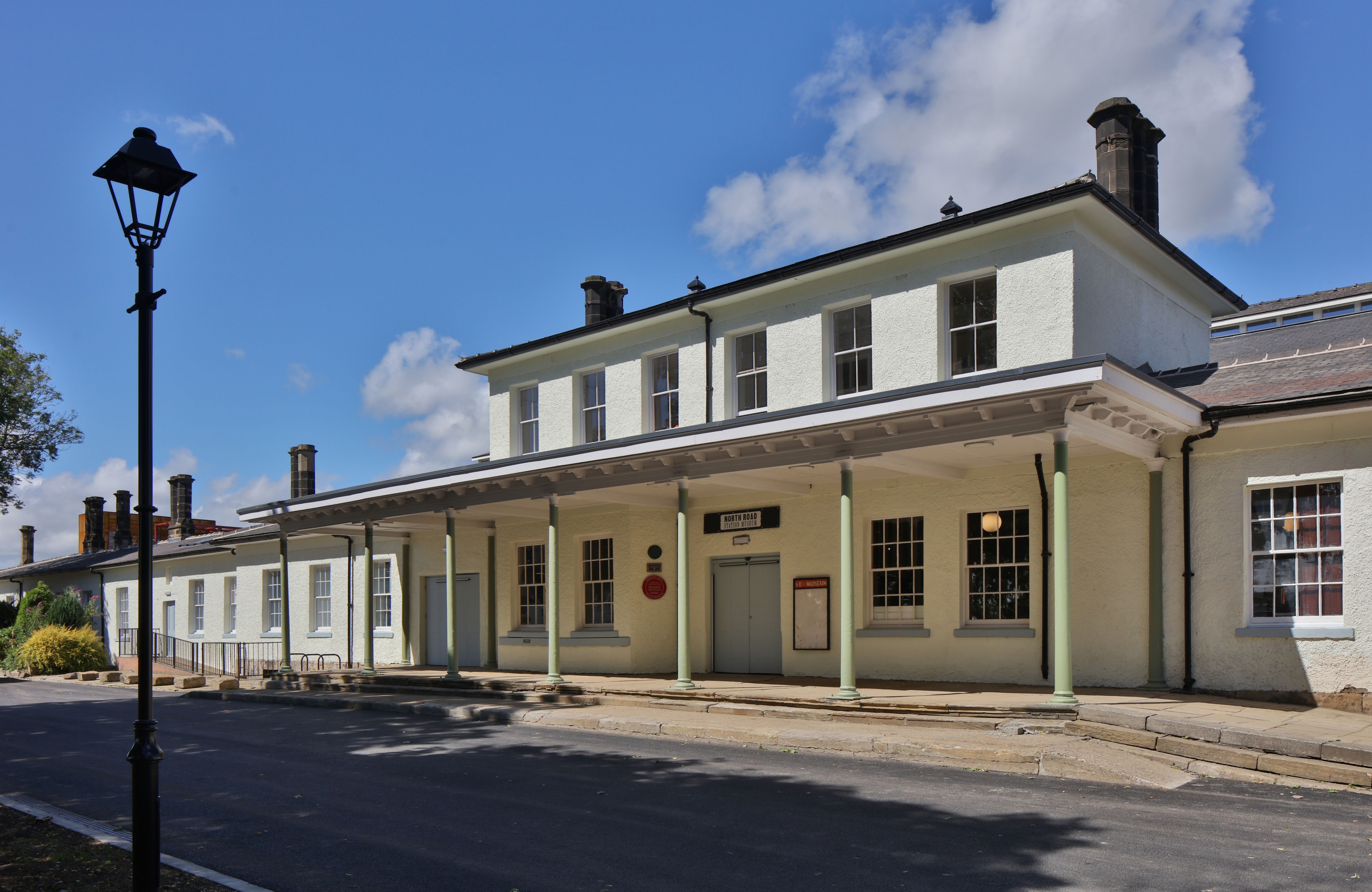
SPACE Architects – Lead Designer, Masterplanning, Architecture, Landscape Design and Principal Designer
PLB – Creative & Interactive Interpretation
Wilmott Dixon Construction – Main Contractor
Billinghurst George & Partners – Structural & Civil Engineering
TGA Consulting Engineers – MEP Services Engineering
CAP.CO – Play Area Designers
Andrew McKeown – Public Art Installations
Key stakeholders, investors and project partners are:
Darlington Borough Council
Tees Valley Combined Authority
A1 Steam Locomotive Trust
Darlington Railway Preservation Society
North Eastern Locomotive Preservation Group
Friends of the Stockton & Darlington Railway
Network Rail
Tourism UK Ltd
National Lottery Heritage Fund
Photography Courtesy of ©Kristen McCluskie
